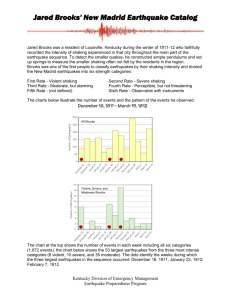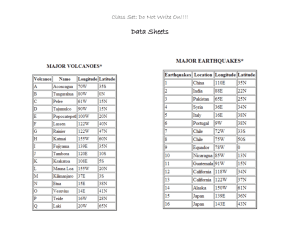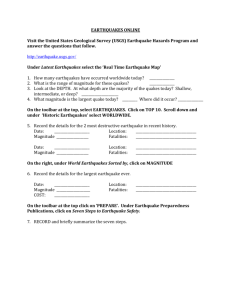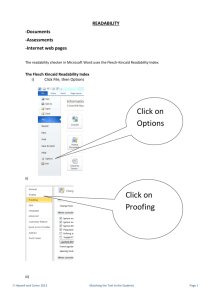HOW AN EARTHQUAKE OCCURS
advertisement
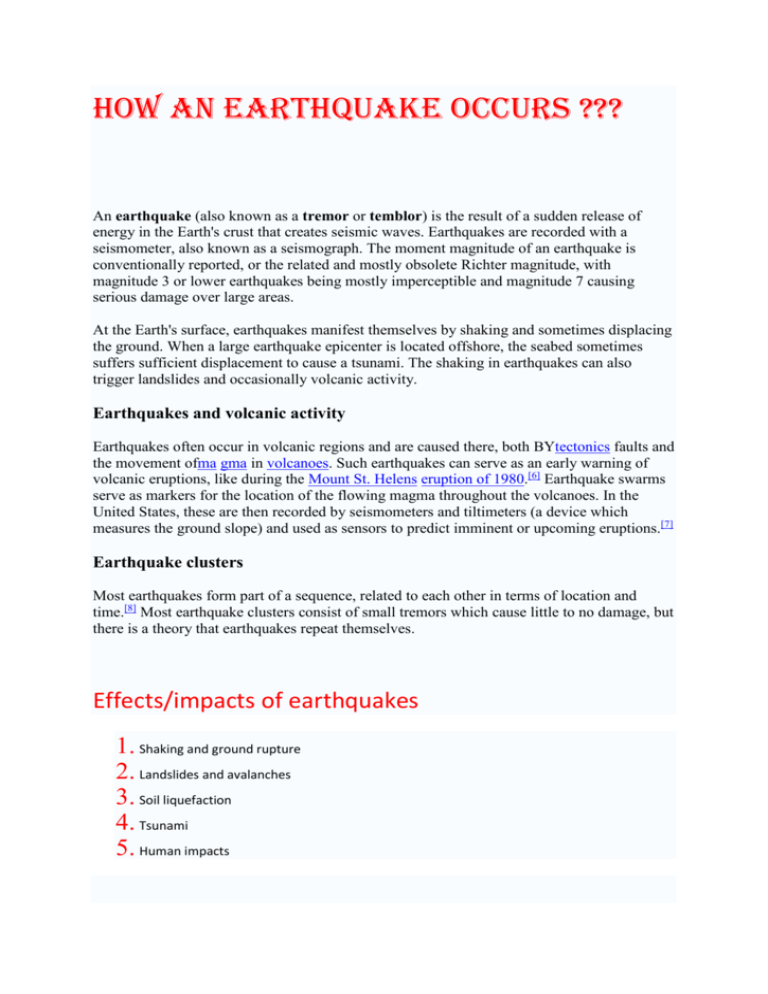
HOW AN EARTHQUAKE OCCURS ??? An earthquake (also known as a tremor or temblor) is the result of a sudden release of energy in the Earth's crust that creates seismic waves. Earthquakes are recorded with a seismometer, also known as a seismograph. The moment magnitude of an earthquake is conventionally reported, or the related and mostly obsolete Richter magnitude, with magnitude 3 or lower earthquakes being mostly imperceptible and magnitude 7 causing serious damage over large areas. At the Earth's surface, earthquakes manifest themselves by shaking and sometimes displacing the ground. When a large earthquake epicenter is located offshore, the seabed sometimes suffers sufficient displacement to cause a tsunami. The shaking in earthquakes can also trigger landslides and occasionally volcanic activity. Earthquakes and volcanic activity Earthquakes often occur in volcanic regions and are caused there, both BYtectonics faults and the movement ofma gma in volcanoes. Such earthquakes can serve as an early warning of volcanic eruptions, like during the Mount St. Helens eruption of 1980.[6] Earthquake swarms serve as markers for the location of the flowing magma throughout the volcanoes. In the United States, these are then recorded by seismometers and tiltimeters (a device which measures the ground slope) and used as sensors to predict imminent or upcoming eruptions.[7] Earthquake clusters Most earthquakes form part of a sequence, related to each other in terms of location and time.[8] Most earthquake clusters consist of small tremors which cause little to no damage, but there is a theory that earthquakes repeat themselves. Effects/impacts of earthquakes 1. Shaking and ground rupture 2. Landslides and avalanches 3. Soil liquefaction 4. Tsunami 5. Human impacts







